MARIANI’S
June
13,
2010
NEWSLETTER
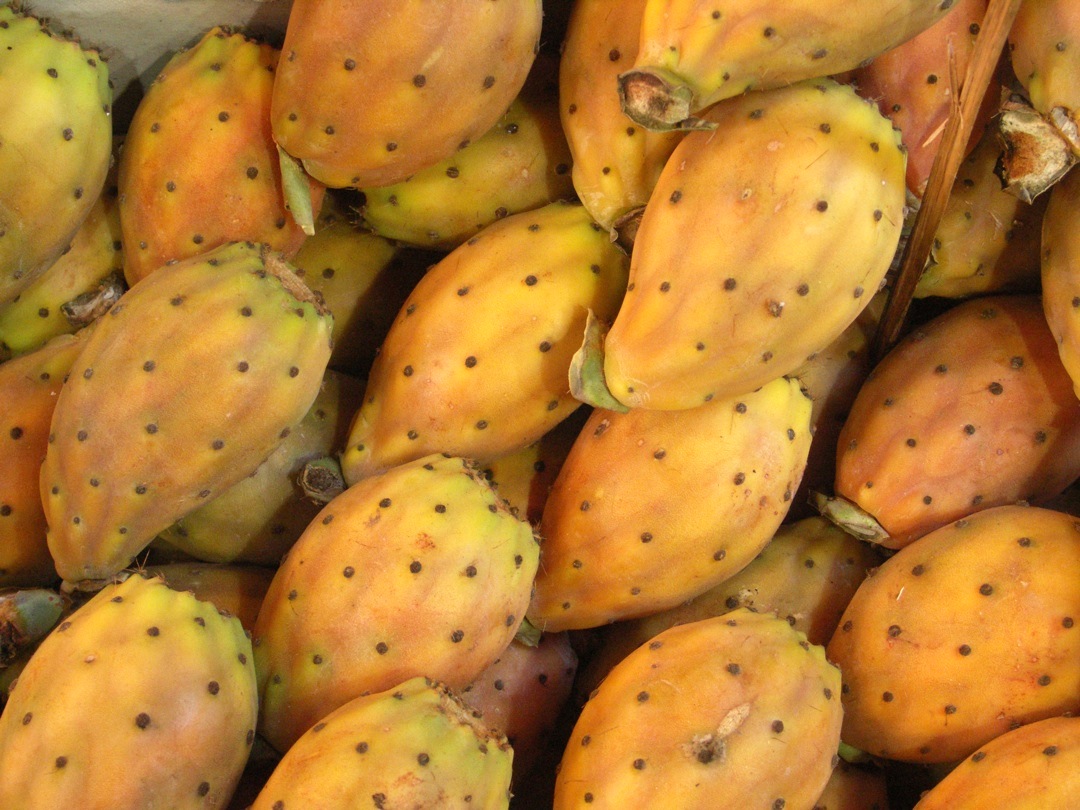
"Prickly Pears, Sicily"
(2009) Photo by Galina Stepanoff-Dargery
``````````````````````````````````````````````````````````````````````````````````
➔ QUESTIONS? TO REACH JOHN MARIANI WRITE TO: newsletter@johnmariani.com.
➔ ARCHIVE: Readers may now access an Archive of all past newsletters--each annotated--dating back to July, 2003, by simply clicking on www.johnmariani.com/archive
➔ SUBSCRIBE AND
UN-SUBSCRIBE: You may subscribe anyone you wish
to this newsletter--free of charge!--by
clicking here.
GOOD
NEWS! Esquire.com now
has
a
new
food
section
called
"Eat
Like
a
Man,"
which
will
be
featuring
restaurant
articles
by
John
Mariani
and
others
from
around
the
USA.
THIS WEEK: El
Rey,
Philadelphia . . . The
11
Best
Food
Scenes
in
Movies.
~~~~~~~~~~~~~
☛ In
This Issue
CRUISING PARADISE by
Christopher Mariani
NEW YORK CORNER:
KENMARE by John Mariani
QUICK BYTES
~~~~~~~~~~~~~
CRUISING PARADISE
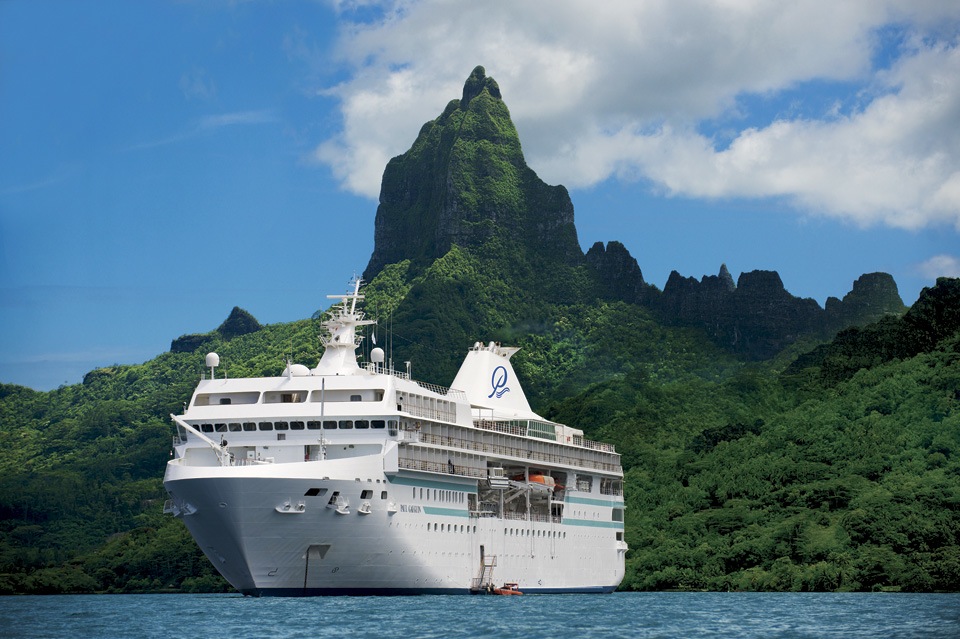
By
Christopher Mariani
From its
array of stunning volcanic islands, amber
lighted sunsets, historic culture and natives as ever gracious as when
the H.M.S. Bounty dropped anchor here, French
Polynesia is a destination still unique in the world.
Tahiti,
Moorea, and Bora Bora, if only for their distinguished aesthetic value,
are
among the most recognized islands of French Polynesia, making up three
of the
Society Islands, named by British explorer James Cook, supposedly
in honor
of London’s Royal Society.
One
of
the
elite
ways
to
experience
these
three
islands,
along
with
Raiatea
and
Taha,
is onboard the M/S
Paul
Gauguin, a luxury cruise ship named after French
post-impressionist
painter Paul Gauguin, who in 1891 visited the Society Islands and
painted the
daily life of the natives, especially those of Tahiti, staying on for
ten
years.
The Paul Gauguin is a supremely elegant
332-passenger
ship that offers a very personal encounter with the Society Islands and
its
people. You get to the ship by
flying into Papeete, Tahiti, 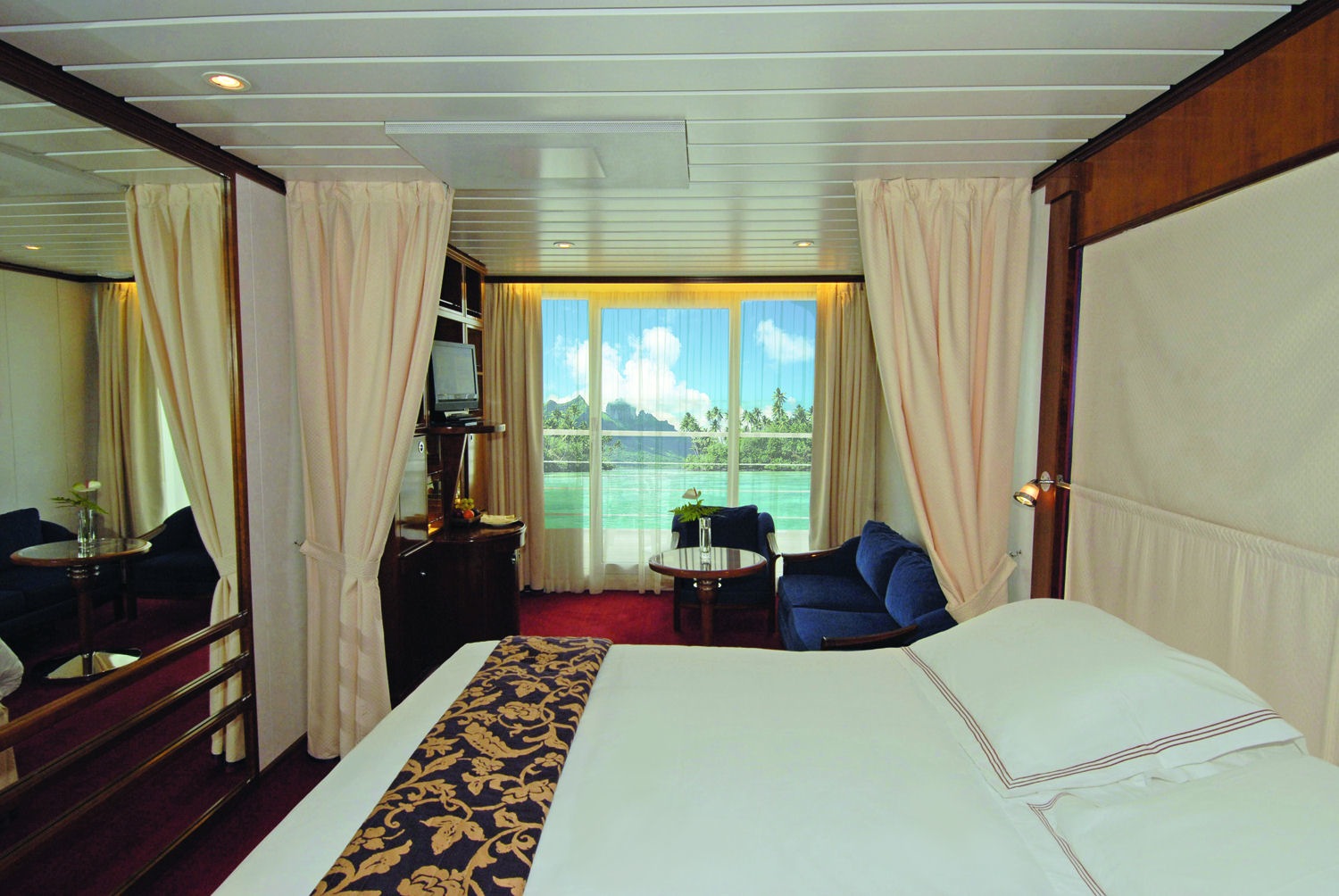 which has a major airport, on either Air Tahiti or Air New
Zealand. There, the Gauguin’s
outstanding
service
staff
began
its
graceful
ministrations the moment
I exited
the airport by welcoming me with broad smiles and a tiare,
the
Polynesian
floral
garland
worn
as
a
necklace. The transfer to the dock by shuttle
bus was quickly
orchestrated
and
once
onboard,
check-in
went
remarkably
fast, followed by a
complimentary
glass of champagne and a personal escort to my cabin.
which has a major airport, on either Air Tahiti or Air New
Zealand. There, the Gauguin’s
outstanding
service
staff
began
its
graceful
ministrations the moment
I exited
the airport by welcoming me with broad smiles and a tiare,
the
Polynesian
floral
garland
worn
as
a
necklace. The transfer to the dock by shuttle
bus was quickly
orchestrated
and
once
onboard,
check-in
went
remarkably
fast, followed by a
complimentary
glass of champagne and a personal escort to my cabin.
As I opened the door to my cabin, I
stared directly across the room to a spectacular view of the
South
Pacific. All
the ship’s 166 cabins are
exceptionally attractive and very spacious, dressed with polished wood
furniture and floor to ceiling mirrors.
One of my most cherished
memories onboard was waking
up the first morning around 5:30 am, rising from my queen-sized bed
and deciding what to order from room service—an ideal and quiet way to
shake
off my jet lag after my flight from Los Angeles. There
I
sat
on
my
veranda
gazing
out
at
the
clear,
almost glass-like South Pacific, easily the most remarkable sunrise
I’ve ever
witnessed. Still in awe, I ate a
delicious breakfast, consisting of a western omelet, thick crispy
bacon,
assorted pastries, fresh cut pineapple, and cantaloupe,
and
drank
cups
of
steaming
hot
coffee,
all
delivered
to
me
my
wonderful
butler,
Jerry. The
jet lag dropped away in a feeling of almost giddy bliss as the warm
breezes
wafted across the veranda. For these
reasons, I
recommend booking a cabin complimented by a balcony, which is hardly a
problem
considering that nearly 70% of the cabins on the Gauguin
are equipped with such a luxury.
After
breakfast each morning, I'd partake
of one
of the Gauguin’s many optional island
excursions.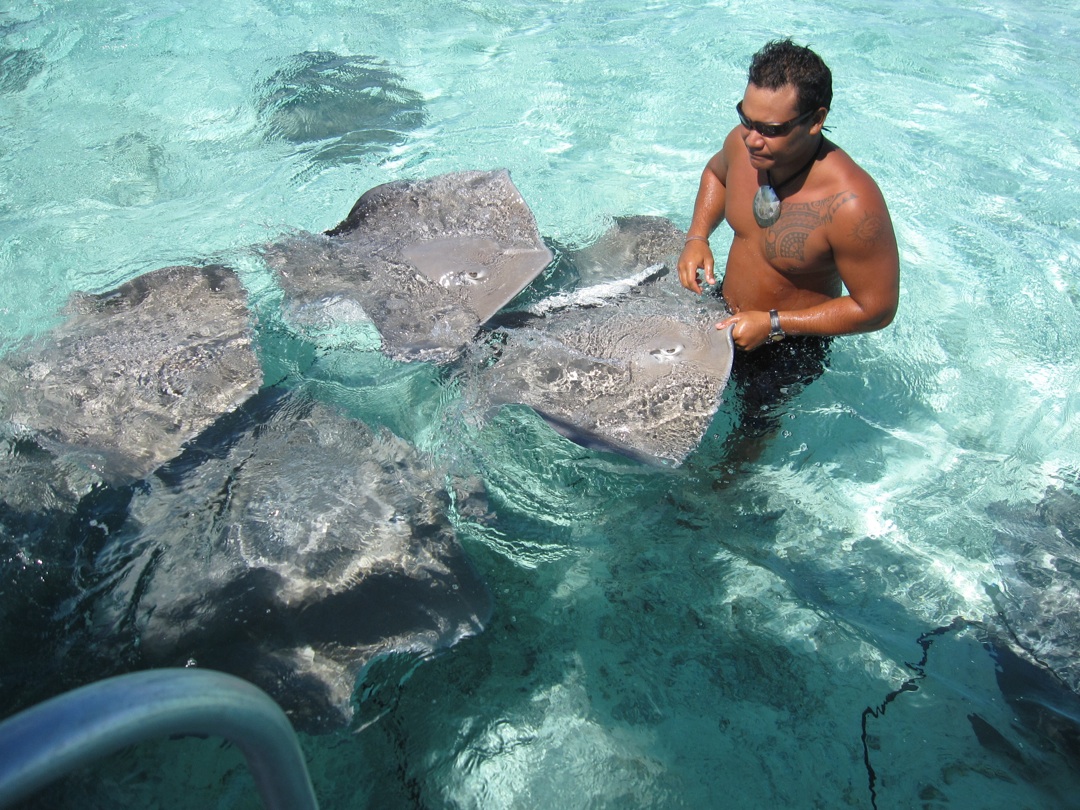 My
first
outing
was
snorkeling
the
shallow
waters
off
Taha’a while
enjoying the site of its maze-like coral reefs. On
my
second
excursion
I
jet
skied
around
the
entire
island
of
Bora
Bora,
which
took
exactly
one hour, including the 15-minute
break on the
shore’s white sand beach. During
this rest time, I ate my first Tahitian hot dog--a banana split in half
and
stuffed with the fresh coconut
shavings.
My
first
outing
was
snorkeling
the
shallow
waters
off
Taha’a while
enjoying the site of its maze-like coral reefs. On
my
second
excursion
I
jet
skied
around
the
entire
island
of
Bora
Bora,
which
took
exactly
one hour, including the 15-minute
break on the
shore’s white sand beach. During
this rest time, I ate my first Tahitian hot dog--a banana split in half
and
stuffed with the fresh coconut
shavings.
My third and most thrilling excursion
was swimming with four-foot lemon sharks as they fought over chum,
following that small adventure by swimming with a friendly company of
velvet-soft
sting rays and a local guide (left).
Almost
all of the excursions are outsourced to expert local companies and
scheduled
through the Gauguin’s reception desk
for a supplemental fee--one of the very few additional fees a
guest might incur, considering that the
cruise
package pricings are all-inclusive. There is no tipping,
no
card swiping, and best of all no
signing for anything. Every meal and
top-shelf alcohol are included
in the price, so that a guest could
literally board the Gauguin for
a seven-day cruise after paying the fare, then never spend one
additional
dollar onboard.
When
I
spoke
with
President
and
CEO
Richard
Bailey,
he
emphasized
strongly
the
friendly
bond
among
guests created by this all-inclusive environment. “Guests
sitting poolside with newly
acquired friends do not have that awkward moment of deciding who will
be buying
the next round of drinks,” he told me, “just as couples at dinner are
not
concerned
with splitting the food bill.” (Bailey acquired the M/S Paul
Gauguin in August 2009, refitted the ship and had its inaugural
voyage in January of this year.) This
savvy, wholly sensible concept has the effect of
dropping all
guests’ defensiveness, creating an atmosphere where you may
eat and
drink as little or as much as you wish with absolutely no worries of
getting a
whopping final bill. I cannot emphasize
enough how pleasant the vibe was radiating from the Gauguin’s
guests,
whom
I
found
overall
to
be
genuine,
intelligent
individuals
from
many
walks
of
life
and
many places over the globe.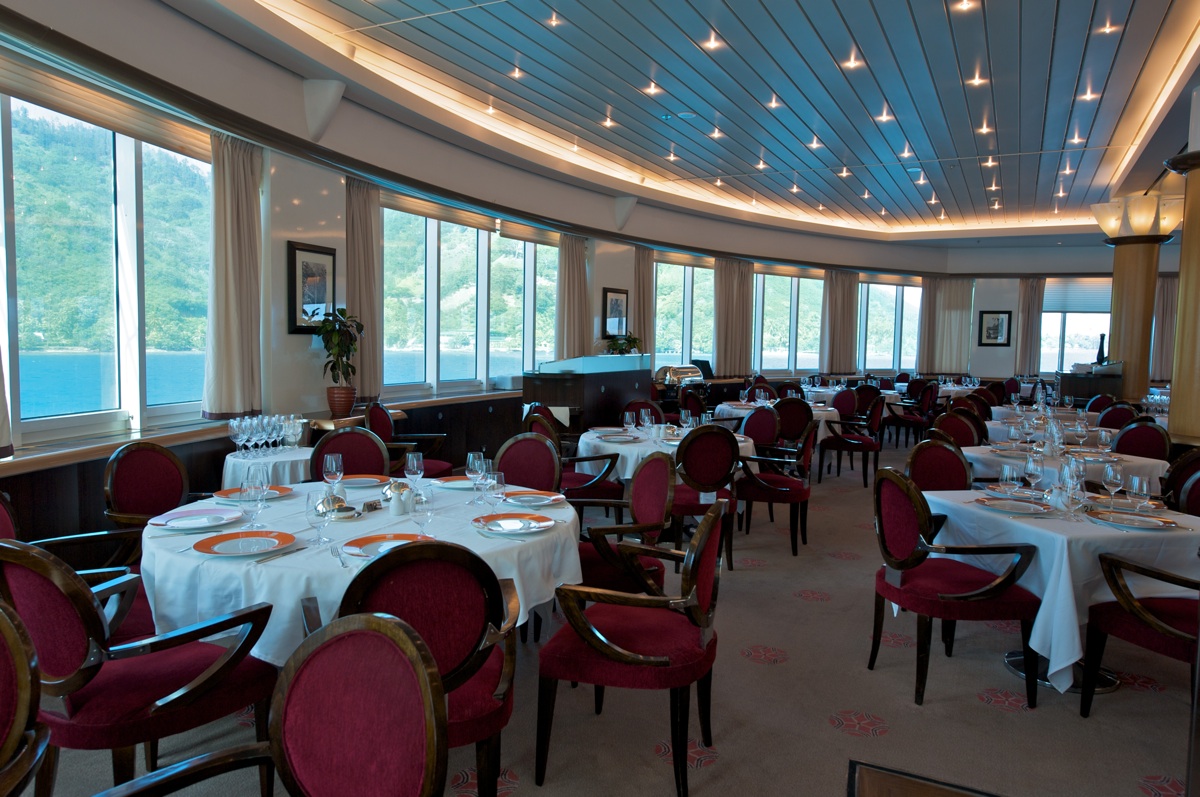
Dining
on the Gauguin should surely
exceed the expectations of even veteran
cruisegoers. Food and beverage
service has gradually improved onboard the world’s high-end cruise
lines, and I
found that Grant Chilcott, Executive Chef of the Gauguin,
does
an
outstanding
job
of
running
the
ship’s
three
restaurants,
showcasing
a
combination
of
French
and
Tahitian dishes. Chilcott
spent
much
of his career in
Sydney, Australia, where he cooked at major hotels and assisted in the
2000
Olympic Games before he joined the Gauguin
in 2004, and he has used the years since developing the
best sources for ingredients used onboard.
L’Étoile (above), my personal
favorite, is
the
largest of the three restaurants, seating 210 guests. Here,
beneath
its
high
ceiling, white walls and enormous
windows, I dined with two
fascinating Australian women as we exchanged stories of previous
travels over a
few glasses of the restaurant’s featured wines, Hogue Fumé Blanc
from Columbia
Valley, Washington, and Cantaluna Merlot from Casablanca Valley, Chile. These were paired (and are changed nightly)
with the restaurant’s dynamic 7-course menu, which that first night
began
with a rosy-rare Tahitian tuna appetizer with baby fennel, capers and
olive oil,
created by Guest Chef Dean Max, who runs 3030 Ocean restaurant in Fort
Lauderdale,
among others. My entrée, a New Zealand beef sirloin, was
perfectly cooked,
accompanied by a rich thyme-infused cabernet sauce.
An option was grilled moon fish with a rosemary-onion
sauce. At L’Étoile, no single dish
is ever
repeated
on the menus for the entire 7-day
cruise.
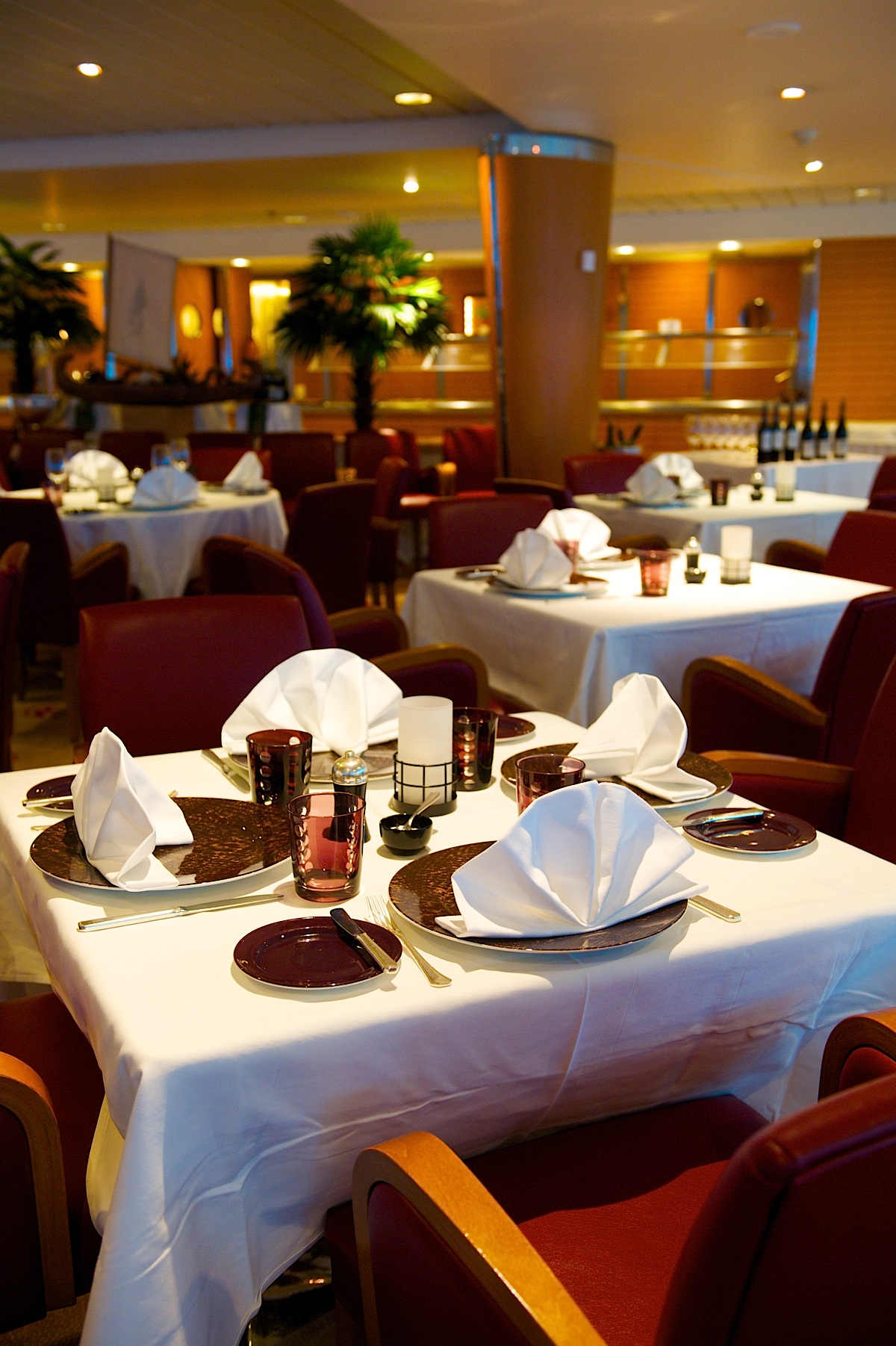 La Veranda (left), seating up to 140 guests,
is a bit more upscale, with an elegant
atmosphere offering a formal dining ambiance, the lighting somewhat
lower than
L’Etoile’s, creating a distinctly romantic cast. The
menu
offered
items
like
terrine
of
foie
gras,
pheasant
consommé,
and
sautéed
scallops
with
black truffles and
shiitake mushrooms. The featured
wines are primarily French, but I also must mention the Las Olas Malbec
from
Argentina, which paired beautifully with the roast duck. The Tahitian
vanilla crème brûlée is a must and will remind all
those who order it of the perfume
that
permeates Taha’a, known as the “Vanilla Island” because of its abundant
vanilla
bean agriculture.
La Veranda (left), seating up to 140 guests,
is a bit more upscale, with an elegant
atmosphere offering a formal dining ambiance, the lighting somewhat
lower than
L’Etoile’s, creating a distinctly romantic cast. The
menu
offered
items
like
terrine
of
foie
gras,
pheasant
consommé,
and
sautéed
scallops
with
black truffles and
shiitake mushrooms. The featured
wines are primarily French, but I also must mention the Las Olas Malbec
from
Argentina, which paired beautifully with the roast duck. The Tahitian
vanilla crème brûlée is a must and will remind all
those who order it of the perfume
that
permeates Taha’a, known as the “Vanilla Island” because of its abundant
vanilla
bean agriculture.
Le Grill, the most casual of the
three restaurants, is located on the top deck and is partially outside
to
partake of the island breezes.
The dinner
menu here is strictly
Polynesian: “poisson cru”
consisting
of
raw
tuna,
lime
juice,
coconut
juice,
baby ginger, tomato and raw onion, is a very traditional
appetizer,
along with Polynesian braised suckling pig and the famous Raiatea curry
chicken. 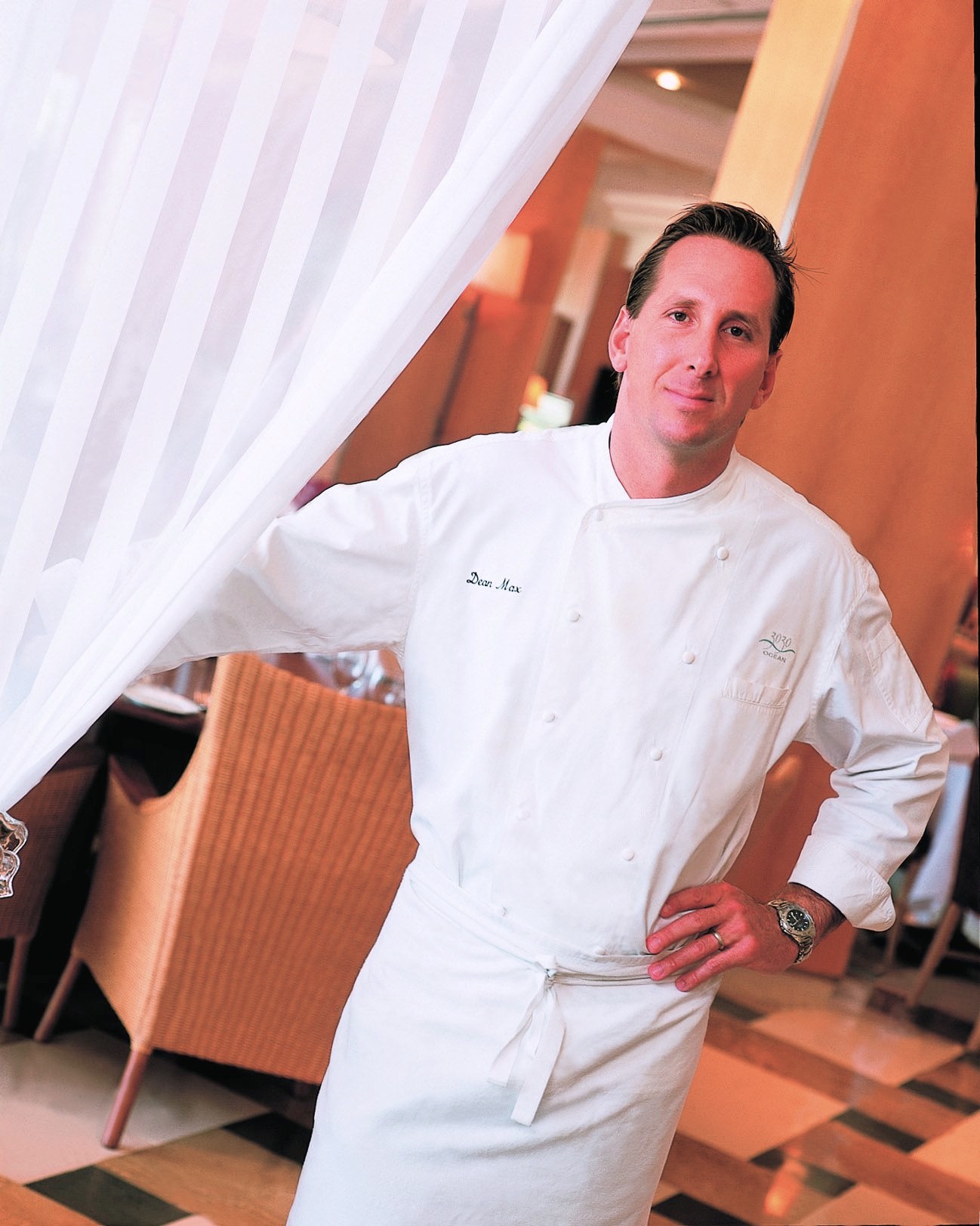 As a guest, if you are interested
in getting
a true feel for the island’s food, dining at Le Grill is a very fine
introduction.
As a guest, if you are interested
in getting
a true feel for the island’s food, dining at Le Grill is a very fine
introduction.
The desserts, pastries and breads
at all three
restaurants are made from scratch by Fotis Kefalakis using very high-end
chocolates and natural ingredients, while baker Herbert Forsthofer
bakes fresh
breads each day--the kind of amenities you do not usually find on the
bigger cruise lines.
The same week I was onboard, I was
lucky enough to
meet, Florida-based guest Chef Dean Max (right), getting to know
him
well
over a few Hinanos,
Tahiti’s
local
beer,
and
I
found
that
he
has
a
great
range for cooking seafood and an indefatigable enthusiasm for creating
new recipes.
Max was brought on board to offer signature dishes featured on the
restaurant’s
three menus and also to demonstrate cooking demos each day on the
ship’s top
deck. The demos’ highlights
included his chilled cucumber mint soup with warm shrimp curry, ahi
tuna
coconut ceviche, and vanilla bean flan.
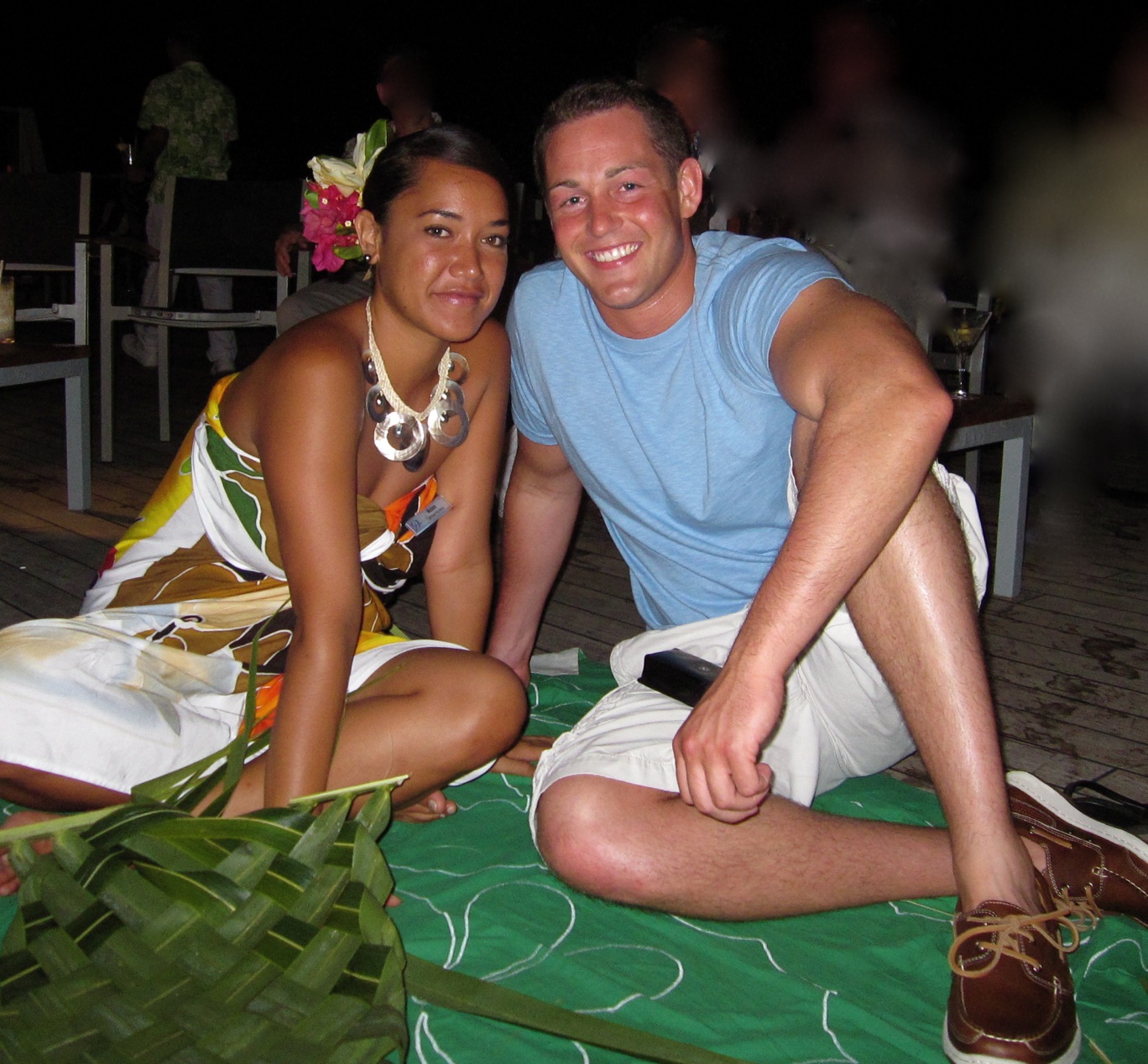 After
dinner,
the
ship
offers
entertainment
in
the
Grand
Salon,
focused
around
a very talented group of eight beautiful Polynesian girls, know
as the “Gauguines.”
Truly gifted, these young, charismatic performers embody
the
local
culture and do a heartfelt job of welcoming guests onto the
ship, not
to
mention that they are among the most gorgeous girls in the South
Pacific,
like
sea
sirens
who
have
drawn
people
to
their faraway islands, some never to leave. Most never want
to.
After
dinner,
the
ship
offers
entertainment
in
the
Grand
Salon,
focused
around
a very talented group of eight beautiful Polynesian girls, know
as the “Gauguines.”
Truly gifted, these young, charismatic performers embody
the
local
culture and do a heartfelt job of welcoming guests onto the
ship, not
to
mention that they are among the most gorgeous girls in the South
Pacific,
like
sea
sirens
who
have
drawn
people
to
their faraway islands, some never to leave. Most never want
to.
Your
intrepid reporter on the job in Tahiti
After
a
night
of
entertainment,
many
guests
tend to head back to their
cabins
for some well-needed rest, but for the few looking to continue
through
the night, the outdoors top deck
has a great bar and live band. Another
late-night option is to hang around the piano bar
where you can
take your chances at the blackjack table. The
current
casino
is
small,
consisting
of
two
card
tables
and
a
handful
of
slot
machines,
a
section of the ship that Richard Bailey
claims to be
his next improvement project. He is also owner of the four Intercontinental
Hotels
and
Resorts on the islands of Bora Bora, Tahiti, and Moorea.
I visited and stayed at Le
Moana
Resort
on Bora Bora, legendary for its above-water
bungalows, with unrivalled privacy set within a natural setting that
gives you a better sense of each island's individuality. More than a
century ago Gauguin himself spent ten years in Tahiti, but he
moved on when he thought the island had become too crowded. Having
spent seven days in Polynesia this spring, I found it to be as pristine
a place as I've ever been and as close to a Pacific Eden as I could
imagine.
NEW
YORK
CORNER
BY JOHN MARIANI
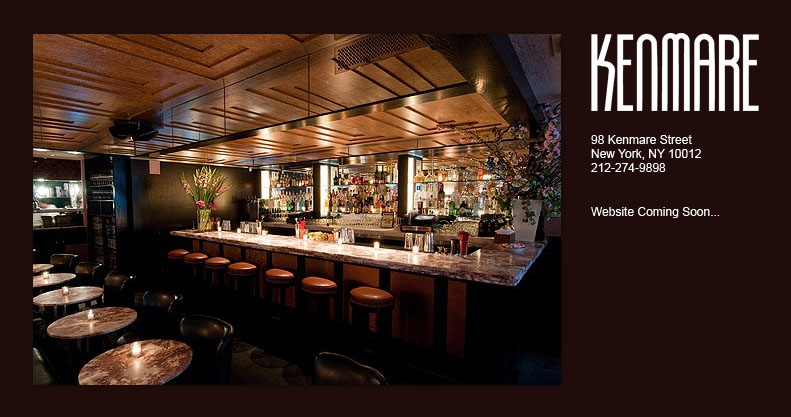
With just 100 seats, Kenmare is the ideal size for a casual downtown restaurant, and the noise level is much easier on the ears than at the kind of big gastro-pubs and pizzerias of the current scene. The professionalism behind the kitchen door and in the dining room is the result of a canny partnership of resto vets Lou Ceruzzi, Nur Khan, and Paul Sevigny, along with Chef Joey Campanaro of The Little Owl and Market Table to run the kitchen. Kenmare is a collaboration of four of the hospitality industry’s top operators. At the bar is Charlotte Voisey, winner of the prestigious
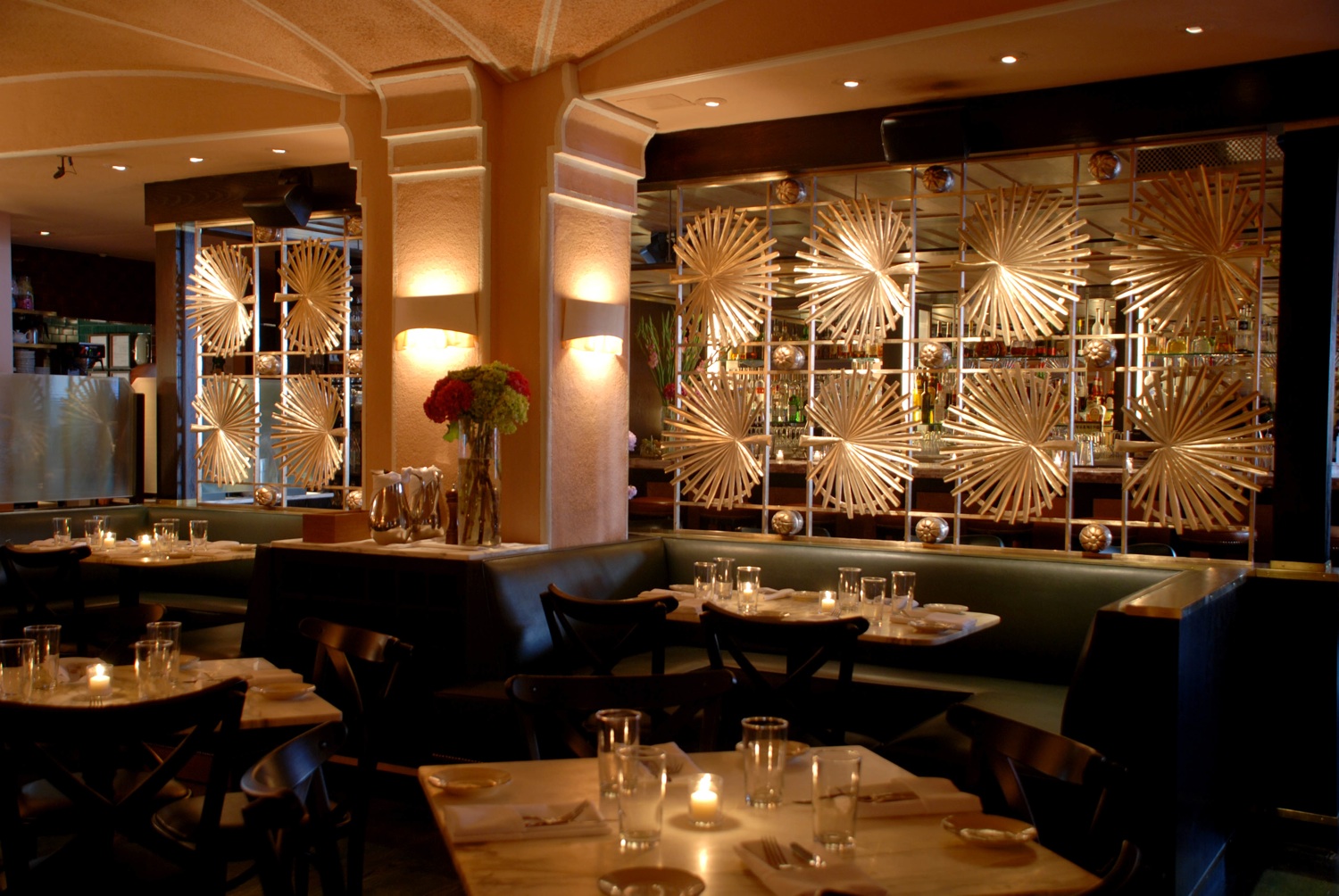 UK
Bartender of the Year award, and behind the well-composed winelist,
Tracy Gribbon of Campanaro’s Blackfoot Consulting catering
company.
UK
Bartender of the Year award, and behind the well-composed winelist,
Tracy Gribbon of Campanaro’s Blackfoot Consulting catering
company.One of the signature items Campanaro does at The Little Owl is his gravy meatball slider, made with beef, pork, veal and pecorino, and it bests just about any such rendition at any restaurant in Little Italy. His basil gnocchi, though too soft one evening, came with a short rib ragu with plenty of flavor, and lobster spaghetti had an assertive fra diavolo pepper sauce.
Halibut is a fish that needs some work to make it interesting, as far as I'm concerned, but the crispy version here with chive-mustard "stroganoff" sauce was a very smart idea whose exterior texture and juicy interior made this a winner. Grilled swordfish came with caramelized fennel, fingerling potatoes aïoli, dandelion greens and olive tapenade, all working together in the Mediterranean style, spicy but balanced, tangy, sweet, salty and briny.
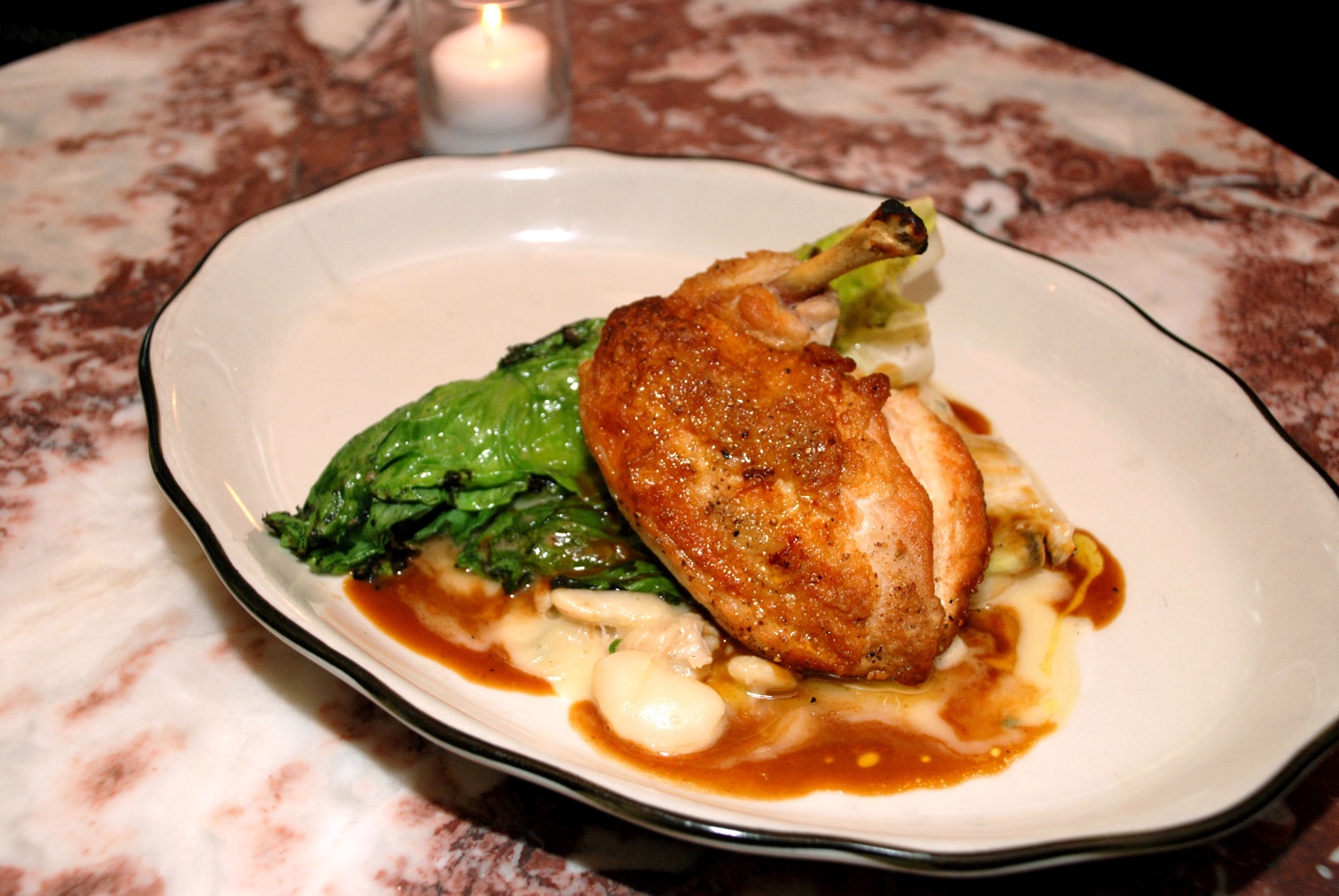 "The Chicken" (left) is the bold pronouncement
about a simple
roast bird, as succulent as any in NYC, accompanied by grilled
escarole, smoked chicken confit, and butter
beans. But the best dish of all was a platter of Colorado lamb
t-bones, nicely seared, well cooked, marvelously flavorful and well
fatted, with toasted orzo, watercress and the crunch of almonds.
Cheddar Fries with green onion, giblet gravy as an
additional side dish was overwrought and not up to par with the
rest
of the dishes.
"The Chicken" (left) is the bold pronouncement
about a simple
roast bird, as succulent as any in NYC, accompanied by grilled
escarole, smoked chicken confit, and butter
beans. But the best dish of all was a platter of Colorado lamb
t-bones, nicely seared, well cooked, marvelously flavorful and well
fatted, with toasted orzo, watercress and the crunch of almonds.
Cheddar Fries with green onion, giblet gravy as an
additional side dish was overwrought and not up to par with the
rest
of the dishes.For dessert they keep the comfort level high with sweet endings like her ricotta cannolis, pumped with gold raisins, and her delicious wild berry and rhubarb crisp with vanilla gelato. Banana beignets with espresso zabaglione were good if not wonderful, but there was everything to enjoy about the warm, chocolate soufflé cake, a cliché these days but a fine rendering here.
Kenmare is a restaurant of the moment in two ways: It is clearly a place everybody wants to try and try early on; but it is also the kind of place that at this moment in culinary history, the food is of a kind that everybody can enjoy and will earn to go back for. When the crowds die down, Kenmare should be one of those restaurants that help transform an entire neighborhood and attract others to bring more light to the streets.
Kenmare
opens
nightly
at
5:00pm
seven
days
a
week.
Appetizers
runs
$8-$14,
entrees
$19-$28.
~~~~~~~~~~~~~~~~~~~~~~~~~~~~~~~~~~~~~~~~
NOTES FROM THE WINE CELLAR
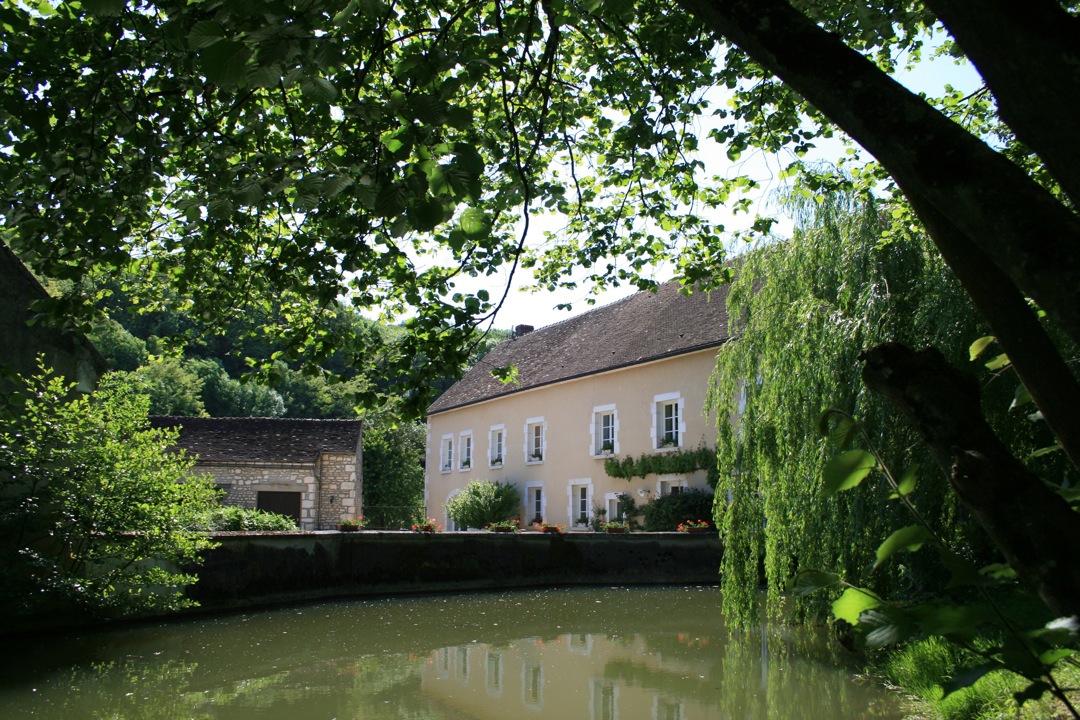 Joseph Drouhin Goes Biodynamic with Its Chablis
Joseph Drouhin Goes Biodynamic with Its Chablisby John Mariani
The
Burgundy
negoçiant
Joseph
Drouhin
Vaudon
(left) has been
putting a lot of its
money
and its reputation behind a wine that was once considered the plonk of
Parisian
bistros—Chablis. About 32
million bottles of Chablis are made annually in twenty villages in
northern
Burgundy, with about a third vinified by the co-operative La
Chablisienne. So, becoming familiar with Chablis is a maddening,
if pleasurable, life’s work. In Burgundy a single vineyard may be owned
by many
negoçiants (merchants) who buy the grapes, must, or wine then
make their own
blends bottled under their own label. As a result, a Chablis from the
same
vineyard made by one negociant may taste quite different from one made
by
another.
But French wine
laws also recognize 7 Grand Crus and the
17 Premier
Crus, so the reputations of
negoçiants like Joseph Drouhin, Bouchard Pere et Fils, Boisset,
Louis
Latour,
and Louis Jadot to produce consistent Chablis in their own style are
what
drives the market to import and sell their wines year after year.
Joseph Drouhin
(founded in 1880), in particular, believes Chablis can be a prestigious
wine
and sell for a good price, if not quite in the league a $3,500 white
burgundy. To that end it has purchased more and more of its
own
vineyards, including four Grand Cru parcels and five Premier Cru, along
with 8
other Chablis parcels on both sides of the Serein River.
The Drouhin
family, now headed by CEO Frédéric Drouhin (right), follows the principles of
biological and biodynamic cultivation to limit the amount of chemicals
in the
vineyards. Instead, they use natural predators to control spiders,
compost from
organic matter instead of fertilizers, and allow certain vineyards to
lie
fallow for a few years.
Winemakers Jerome
Fauré-Brac and Veronique Drouhin (she
also makes the
wine at Domaine Drouhin in Oregon) press the grapes from their own
vineyards
and make the wines at their own facilities, with fermentation in
stainless
steel. No new oak is used because Drouhin believes Chablis can acquire
too much
flavor of the wood; instead, large, older barrels are used for 7-12
months of
aging. The finished wines are released between 7 and 12 months later.
Even then,
the
best Chablis may acquire more character after another few years, while
the
commercial Chablis produced in large quantities for quaffing in bistros
is best
drunk quickly and without great expectations. Still, even upon release,
the
Drouhin Chablis show admirable and individual character and finesse
from estate
to estate.
The 2007
vintage came in under difficult climatic conditions—a warmer than
normal
spring, the rainiest July in 30 years, but good sunshine in September,
allowing
for quick ripening and good acid levels, though it was one of the
smallest
harvest in ten years. In his notes, Frédéric Drouhin says
the 2007’s
should be
drunk after the 2006’s but before the 2005’s.
The 2008
vintage
produced exceptionally fine Chablis, following a rainy summer with
ideal
conditions in fall. The crop was
still smaller but Drouhin 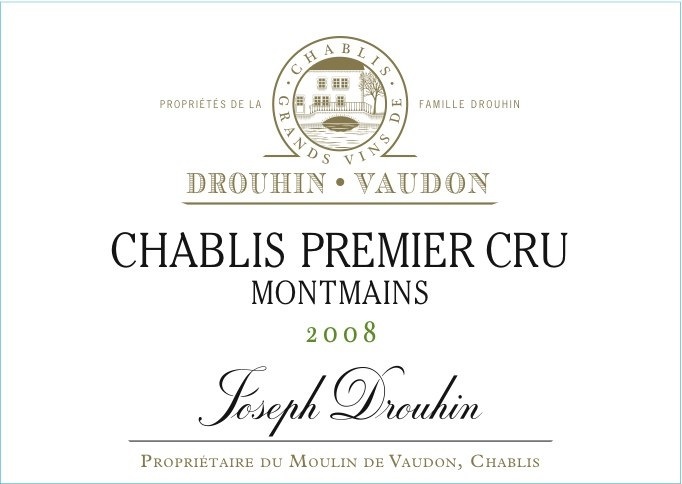 calls 2008 “one of the greatest vintages of
the past
25 years.” So confident is the company that it recommends “drinking the
[basic] Chablis within to 4 or 5 years, the Premier Crus from 7 to 8
and the
Grand Crus to drink from 2011 and the next 12 years.”
calls 2008 “one of the greatest vintages of
the past
25 years.” So confident is the company that it recommends “drinking the
[basic] Chablis within to 4 or 5 years, the Premier Crus from 7 to 8
and the
Grand Crus to drink from 2011 and the next 12 years.”
After
tasting
several of Drouhin’s 2008 Chablis, I can understand his enthusiasm,
though I
doubt I’m going to wait 12 years to see how the Grand Crus turn out. The entry level Chablis ($24.50) shows
the flinty character of the wine along with a nice acidity that shows
why
Chablis is the perfect wine with oysters.
With Drouhin’s
Grand Cru appellations, Chablis-Vaudésir ($72), Les Clos
($83.50) and
Bougros
($72), and Premier Crus like Montmains ($38.25) and Sécher
($38.25),
the
complexity increases significantly, the fuller body of the wines
reveals their
richness, with more spice and minerals.
These
are
very fine northern white Burgundies that bear comparison with their
more
celebrated southern cousins. And they are still the best thing you can
drink
with a grand plâteaux de
fruits de mer while sitting on the terrace at
a
Montparnasse bistro.
~~~~~~~~~~~~~~~~
IT ALSO HAS POSSIBILITIES AS AN OIL DISPERSANT IN THE GULF
The
military of Gauhati, India, has conducted tests that have convinced
them that the
A
new book entitled Gourmet Meals
in Crappy Little Kitchens by Jennifer Shaertl includes
recipes for
-Shuttupahyourface
Bruschetta
-For a Good
Time Call . . . Champagne Oysters
-Wassup! Wasabi
Chicken Salad
-Snake-Charmin’
Moroccan Lamb Chops
-Leaning Loaf
of Tofu Lasagna Stacks
~~~~~~~~~~~~~~~~~~~~~
QUICK BYTES
✉ Guidelines for submissions: QUICK BYTES publishes only events, special dinners, etc, open to the public, not restaurant openings or personnel changes. When submitting please send the most pertinent info, incl. tel # and site, in one short paragraph as simple e-mail text, WITH DATE LISTED FIRST, as below. Thanks. John Mariani
OWING
TO
THE
OVERWHELMING
NUMBER
OF FATHER'S DAY
ANNOUNCEMENTS
AND DINNERS, I AM UNABLE TO INCLUDE
ANY IN QUICK BYTES.
* Every Wed.
this summer in NYC, The Roger Smith Hotel will hold a
Clam Bake on Henry's Roof Terrace. $25 pp.
call 212-339-2097
* On June 14 in NYC, David Burke Townhouse is hosting a special wine dinner with vintner Agustin Huneeus of Quintessa winery. Chef David Burke will serve a 5-course menu of dishes paired with wines from the Napa Valley winery. 7pm. $125 pp. Call 212-813-2121 or email Katherine Leong at Katherine@davidburke.com
* On June
14-19 and 21-26, Aquavit
restaurant in NYC will
host its annual Herring
Festival during lunch and dinner in the Bistro. The herring
smorgasbord will include some classic
Swedish preparations and some
innovative seasonal specials by Executive Chef Marcus Jernmark. $24.07
pp. at lunch; $35 at dinner. Call 212-307-7311.
* On June 16 in Scottsdale, AZ, Sassi Executive Chef Peter DeRuvo presents a preview of his James Beard House dinner, "Italian Summer" being presented in NYC July 21. A five-course menu includes dessert and matching Italian wines starting with a reception of passed spuntini appetizers served in the elegant ambiance of an Old World Italian villa. $85 pp includes 5 courses and wines. Visit http://www.sassi.biz .
*
On June 17 in Berkeley, CA, Spenger's Fresh Fish Grotto hosts a One Fermented Evening
California Wine Dinner with a 5-course menu prepared by Chef
Devon
Boisen. $90 pp. Call 510-845-7771; http://www.spengers.com/.
* On June 19 Chillingsworth
Restaurant in Brewster, MA, will host the first Vintner's/Tasting
Dinner. Flowers Winery of Sonoma, Ca. will pour their wines with a
menuby Chef Nitzi Rabin. $120 pp. Call 800 430 3640 or. 508 896 3640.
www.chillingsworth.com
* On June 20 Restaurant Kelly Liken in Vail, CO, will kick off
her Summer Harvest Sunday Suppers. Chef Kelly Liken will create an
original
3-course tasting menu for $45 pp inspired by the Vail Farmers’ Market
featuring
ingredients and products from Colorado’s prized artisans, farmers, and
purveyors. Visit <http://www.kellyliken.com>
or
call
970-479-0175.
* On June 24 in
Kennewick, WA, the
Washington Wine Industry
Foundation presents the 10 Annual
Wine Cup. Registration is $125 pp. Visit <http://www.washingtonwinefoundation.org>
or
call
509-782-1108.
* On June 25 & 26, Executive Chef Guillaume Bienaimé of Marché in Menlo Park, NJ, will offer a 4-course menu featuring the best in Pacific Coast seafood, to benefit the Gulf Coast Oil Spill cleanup. Marché will donate $10 for each menu sold to the Louisiana Bayoukeepers, members of the Waterkeeper Alliance. $80 pp and $59 add’l for wine pairings. Call (650) 324-9092 or visit <http://www.restaurantmarche.com> .
* On June 26 Craftbar in Atlanta, GA will host a Culinary Experience with Chef de Cuisine Adam Evans, including a trip to a local farmer’s market, cooking demo and a three-course lunch with wine pairings. $85 pp. Call 404-995-7580.
* From Sept
22 – Oct 3, “Crack of Noon
France” – a new kind
of organized travel experience showcasing the country’s food, wine, and
sights
where almost every day’s activities start after “the civilized hour of
noon.” Inclu. stops in Paris, Provence, Avignon,
Aix-en-Provence, and the French Riviera. The tour is limited to 24
passengers. Registration is due by
June 30,
2010. . . . Oct 6 – 18, 2010: “Crack of Noon Italy” incl.
stops in Rome, Tuscany, Florence, Bologna, Modena, and
Venice. The tour is limited to 24 passengers. Registration is due by
June 30,
2010. Request registration forms online at
www.exectours.com/crackofnoonitaly.html
<http://www.exectours.com/crackofnoonitaly.html>
or
call
toll
free
800-521-0070.
Everett Potter's Travel Report:

~~~~~~~~~~~~~~~~~~~~~~~~~~~~~~~~~~~~~~~~~~~~~~~~~~~~~~~~~~~~~~~~~~~~~~~~~~
Eating Las Vegas is the new on-line site for Virtual Gourmet contributor John A. Curtas., who since 1995 has been commenting on the Las Vegas food scene and reviewing restaurants for Nevada Public Radio. He is also the restaurant critic for KLAS TV, Channel 8 in Las Vegas, and his past reviews can be accessed at KNPR.org. Click on the logo below to go directly to his site.
~~~~~~~~~~~~~~~~~~~~~~~~~~~~~~~~~~~~~~~~~~~~~~~~~~~~~~~~~~~~~~~~~~~~~~~~~~~
Tennis Resorts Online: A Critical Guide to the World's Best Tennis Resorts and Tennis Camps, published by ROGER COX, who has spent more than two decades writing about tennis travel, including a 17-year stretch for Tennis magazine. He has also written for Arthur Frommer's Budget Travel, New York Magazine, Travel & Leisure, Esquire, Money, USTA Magazine, Men's Journal, and The Robb Report. He has authored two books-The World's Best Tennis Vacations (Stephen Greene Press/Viking Penguin, 1990) and The Best Places to Stay in the Rockies (Houghton Mifflin, 1992 & 1994), and the Melbourne (Australia) chapter to the Wall Street Journal Business Guide to Cities of the Pacific Rim (Fodor's Travel Guides, 1991). THIS WEEK: Where Bollywood Meets Beefeaters; Denver Bike Sharing.

Family Travel
Forum: The
Family
Travel
Forum
(FTF),
whose
motto
is
"Have
Kids,
Still
Travel!",
is
dedicated
to
the
ideals,
promotion
and
support
of
travel
with
children.
Founded by business professionals John Manton and Kyle
McCarthy with first class travel industry credentials and global family
travel experience, the independent, family-supported FTF will provide
its members with honest, unbiased information, informed advice and
practical tips; all designed to make traveling a rewarding, healthy,
safe, better value and hassle-free experience for adults and children
who journey together. Membership in FTF will lead you to new worlds of
adventure, fun and learning. Join the movement.
All You Need to Know Before You Go
nickonwine: An engaging, interactive wine column by Nick Passmore, Artisanal Editor, Four Seasons Magazine; Wine Columnist, BusinessWeek.com; nick@nickonwine.com; www.nickonwine.com.

MARIANI'S VIRTUAL GOURMET NEWSLETTER is published weekly. Editor/Publisher: John Mariani.
Contributing Writers: Christopher
Mariani, Misha Mariani, Robert
Mariani,
John A. Curtas, Edward Brivio, Mort
Hochstein, Suzanne Wright, and Brian Freedman. Contributing
Photographers: Galina Stepanoff-Dargery, Bobby Pirillo. Technical
Advisor:
Gerry McLoughlin.
Any of John Mariani's books below
may be ordered from amazon.com by clicking on the cover image.
 My
newest book, written with my brother Robert Mariani, is a memoir of our
years growing up in the My
newest book, written with my brother Robert Mariani, is a memoir of our
years growing up in the For those of you who don't think of the Robert and I think you'll enjoy this very personal look at our --John Mariani |
 |
 |
 |
 |
 |
 |
© copyright John Mariani 2010
